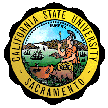|
Your readings and references this week
come from several different sources:
1) Well logs- CSUS
wellfield:
Scanned copies of the drillers logs from
EXT, MW-1, MW-1A, MW-2, MW-2A, MW-3 and MW-3A are available at this
link:
CSUS wellfield
logs
2) Sampling
guidelines and references:
California EPA, Department of Toxic
Substances Control, 2008 revision, Representative Sampling of
Groundwater for Hazardous Substances, 26 pp. with appendices.
DTSC
sampling guidelines
USGS Water Resources Division standard
methods: U.S. Geological Survey, variously dated, National field manual for the collection of water-quality data: U.S. Geological Survey Techniques of Water-Resources Investigations, book 9, chaps. A1-A9.
Accessed
online at
http://pubs.water.usgs.gov/twri9A/, July 2012.
Ch. 2
Selecting equipment for water sampling
Ch. 3
Cleaning equipment for water sampling
Ch. 4
Collection of water samples
Ch. 5
Processing water samples
Ch. 6.0
Guidelines for field measurement of water quality
3) Low flow sampling
papers:
Several authors have compared results
between traditional purging methods and low-flow sampling methods.
Note that the definition of "low-flow" varies!
- Gass, T.E., Barker, J.F., Dickhout,
R., Fyte, J.S., 1991, Test Results of the Grundfos
Ground-Water Sampling Pump, National Water Well Association
Proceedings of the Fifth National Symposium on Aquifer Restoration
and Ground Water Monitoring, 13 p.
Gass et al., 1991
- Kearl, P.M., Korte, N.E., Stites, M,
and Baker, J., 1994, Field Comparison of Micropurging vs.
Traditional Ground Water Sampling, Ground Water Monitoring and
Review, Fall issue, pp. 183- 190.
Kearl et al., 1994
Pohlmann, K.F., Blegen, R. P., and Hess,
J.W., 1991, EPA Project summary, Field Comparison of Ground-Water
Sampling Devices for Hazardous Waste Sites: An Evaluation using
Volatile Organic Compounds. EPA/600/S4-90/028, 4 p.
Pohlmann et al., 1991
Puls, R.W., and Barcelona, M.J., 1996,
Low-Flow (Minimal Drawdown) Ground-Water Sampling Proceedures, EPA
Groundwater issue, EPA/540/S-95/504, 11 p.
Puls and Barcelona, 1996
|
